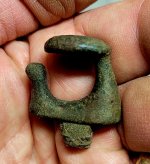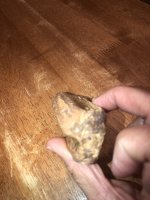N
NinjaT
Guest
Yesterday I was using a two probe resistivity system to check a 85 ft hole some people had been digging in an area of the Philippines which beyond 1-2 ft depth is pure limestone from calcified coral reef. With the hole positioned in the center of our probes, from the surface down to about 90 ft we were getting readings which increased from around 130 steadily on up to around 300 ohms as we increased the spacing of the probes. Then at about 200 ft probe spacing there was a huge drop in resistivity. From a reading of 300-330 ohms on the previous reading with about 180 ft spacing, it dropped to .5 ohms and maintained for almost a full minute leveling out at a peak of 5 ohms. This was inland enough to not be saline ground water and too high to be freshwater which would have given a much higher reading at this depth anyways.
What on this good earth could possibly have caused such a massive drop in resistivity beyond a stack of gold bars? Can anyone with experience using geo resistivity meters weigh in?
We were using a pro machine, $20,000 mining equipment.
Iris Instruments T-VLF
What on this good earth could possibly have caused such a massive drop in resistivity beyond a stack of gold bars? Can anyone with experience using geo resistivity meters weigh in?
We were using a pro machine, $20,000 mining equipment.
Iris Instruments T-VLF
Amazon Forum Fav 👍
Last edited:




